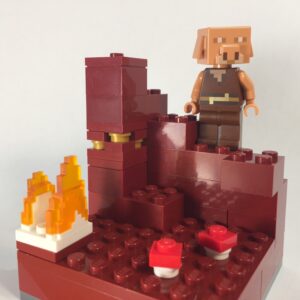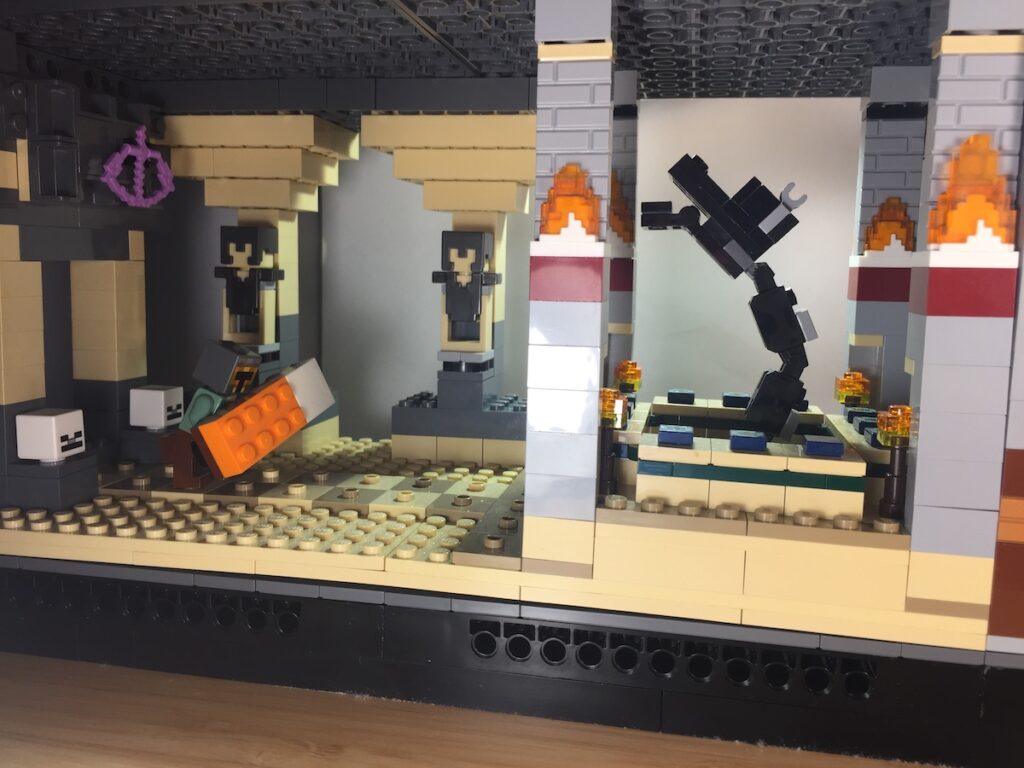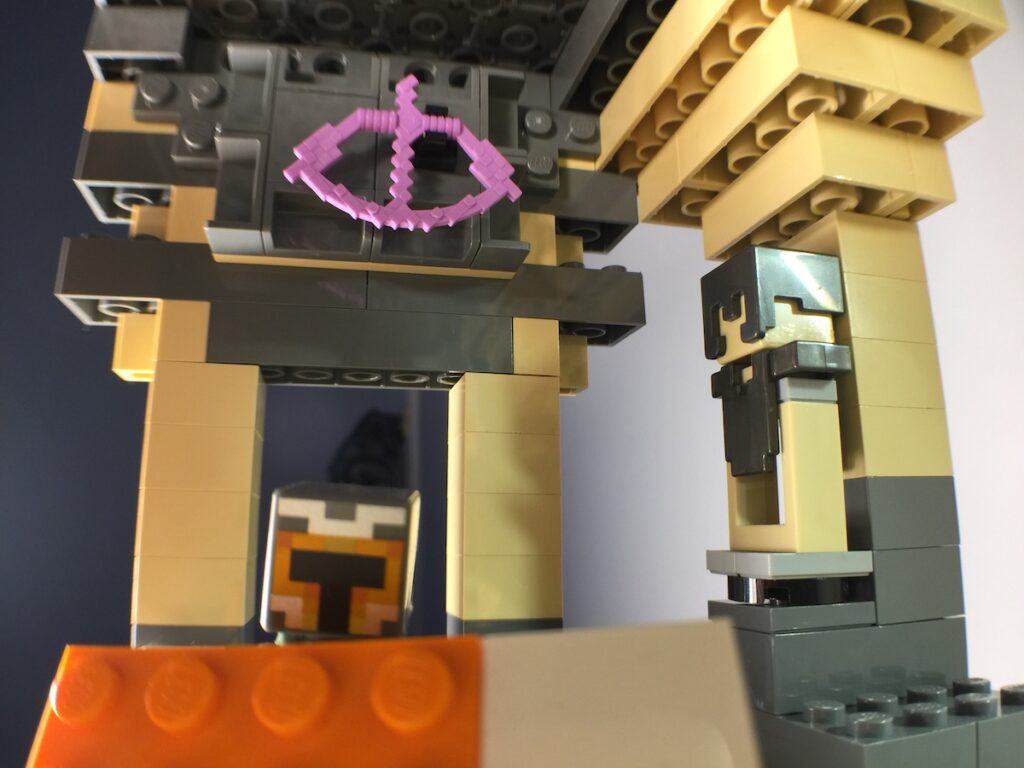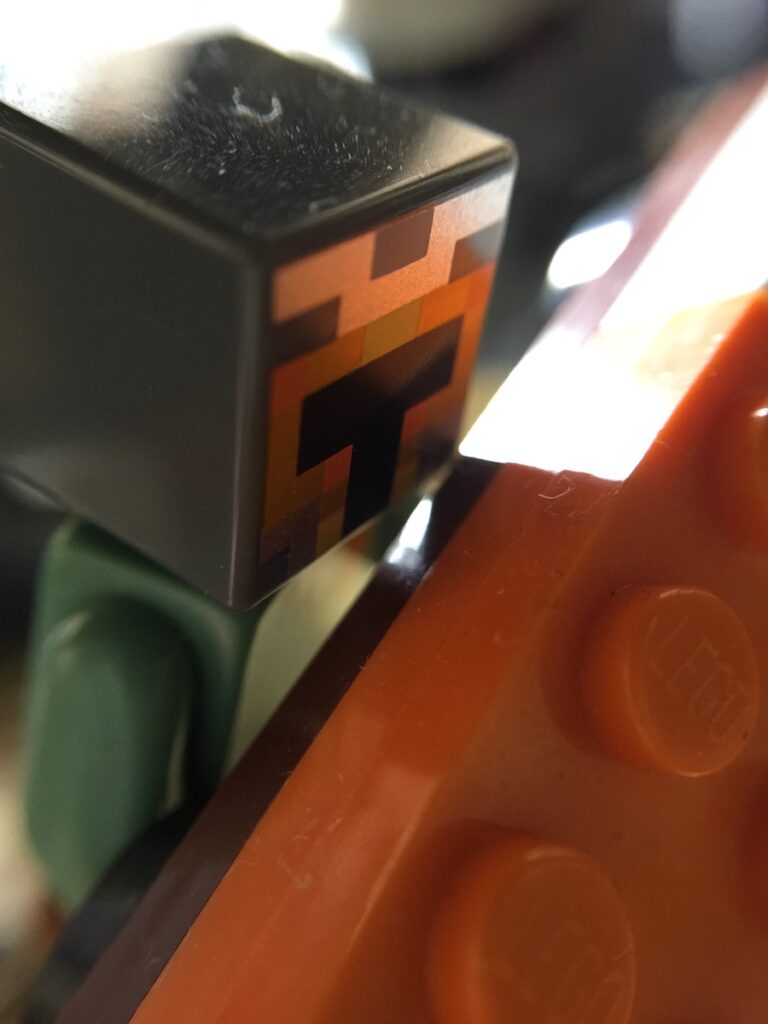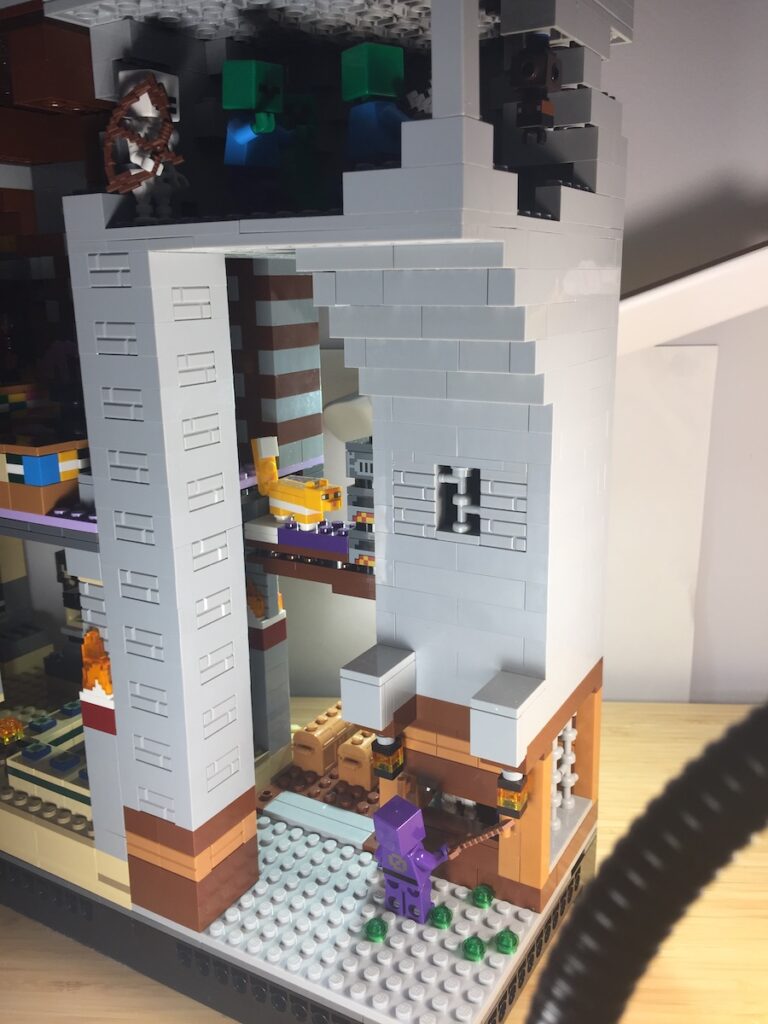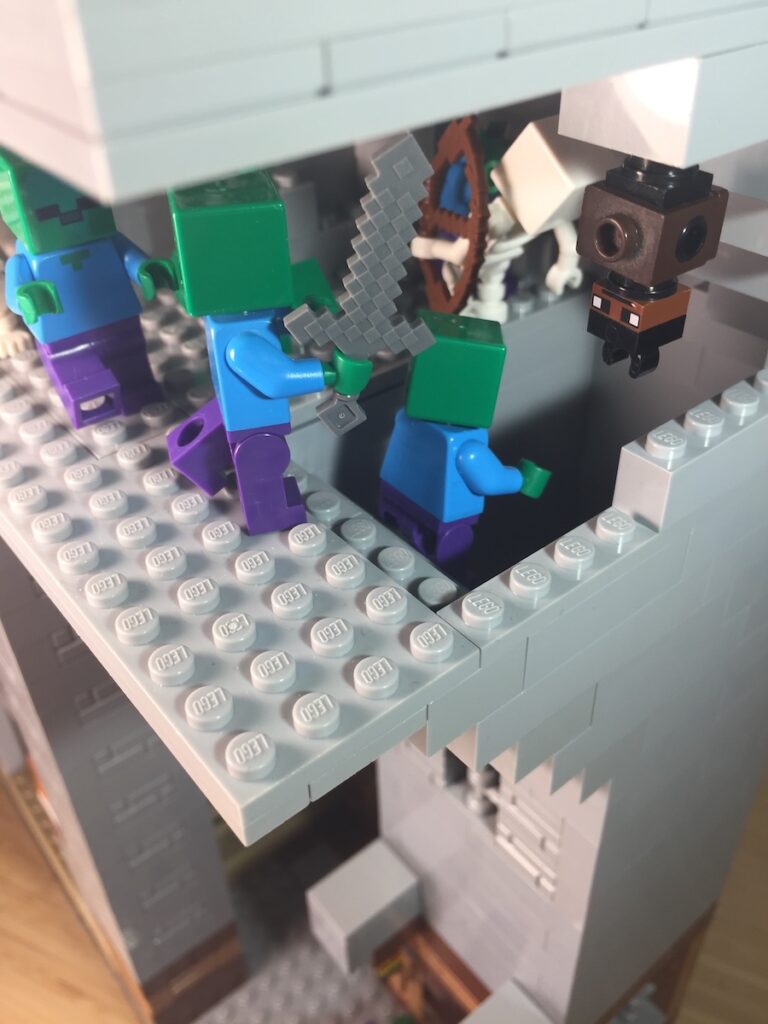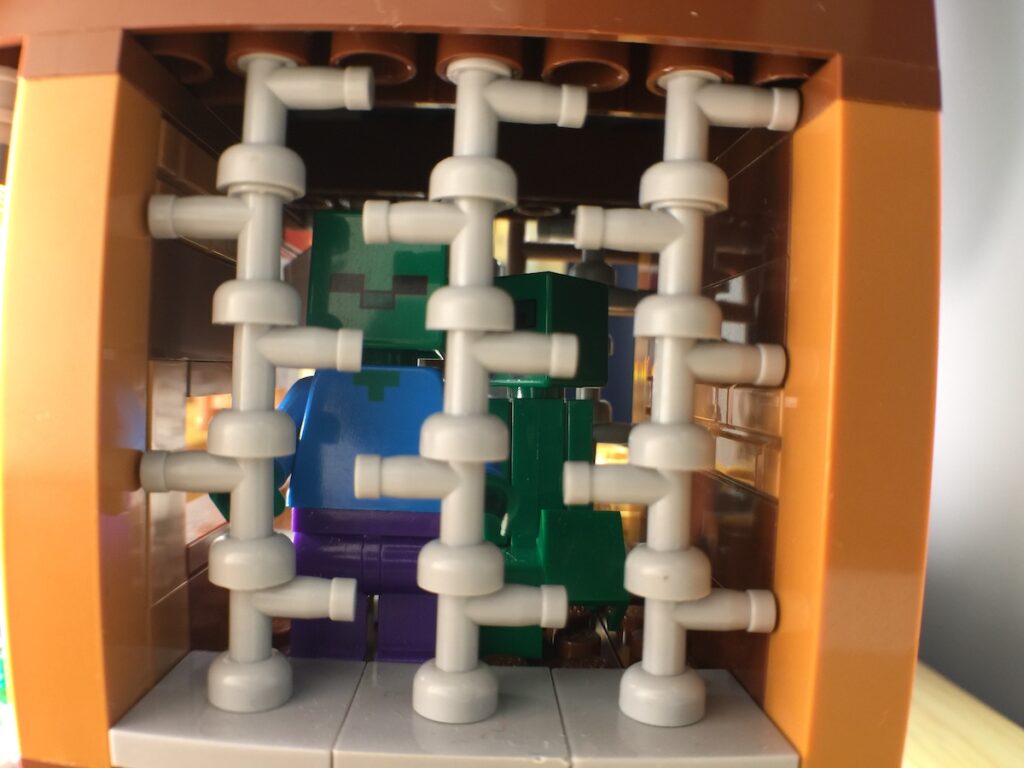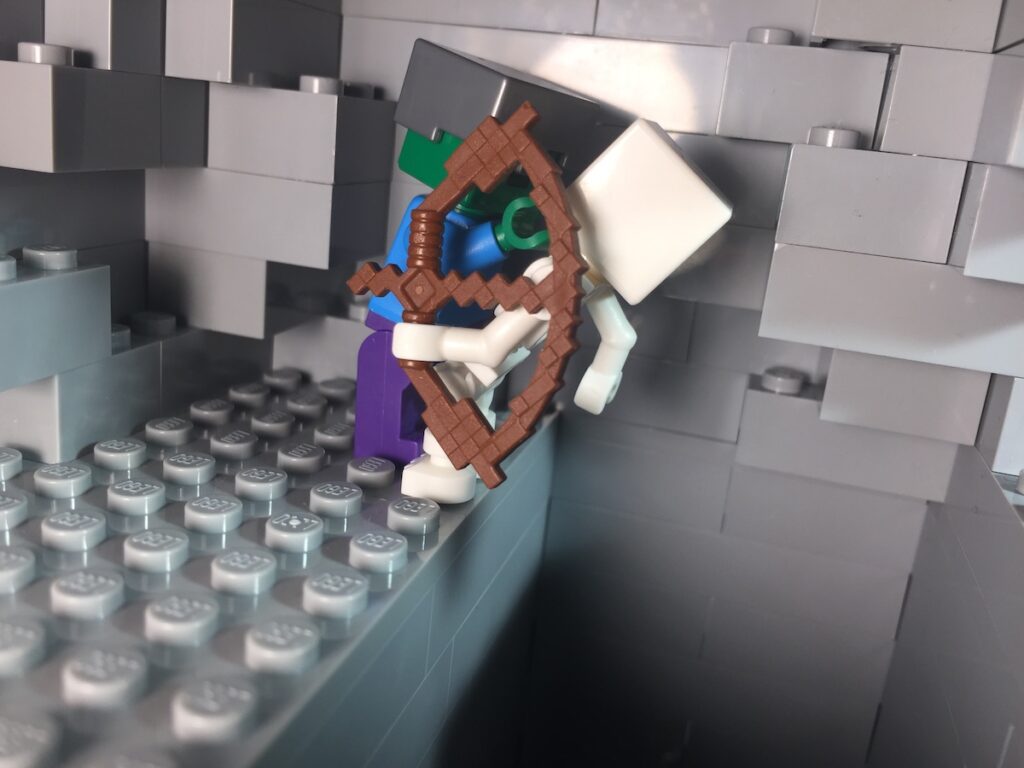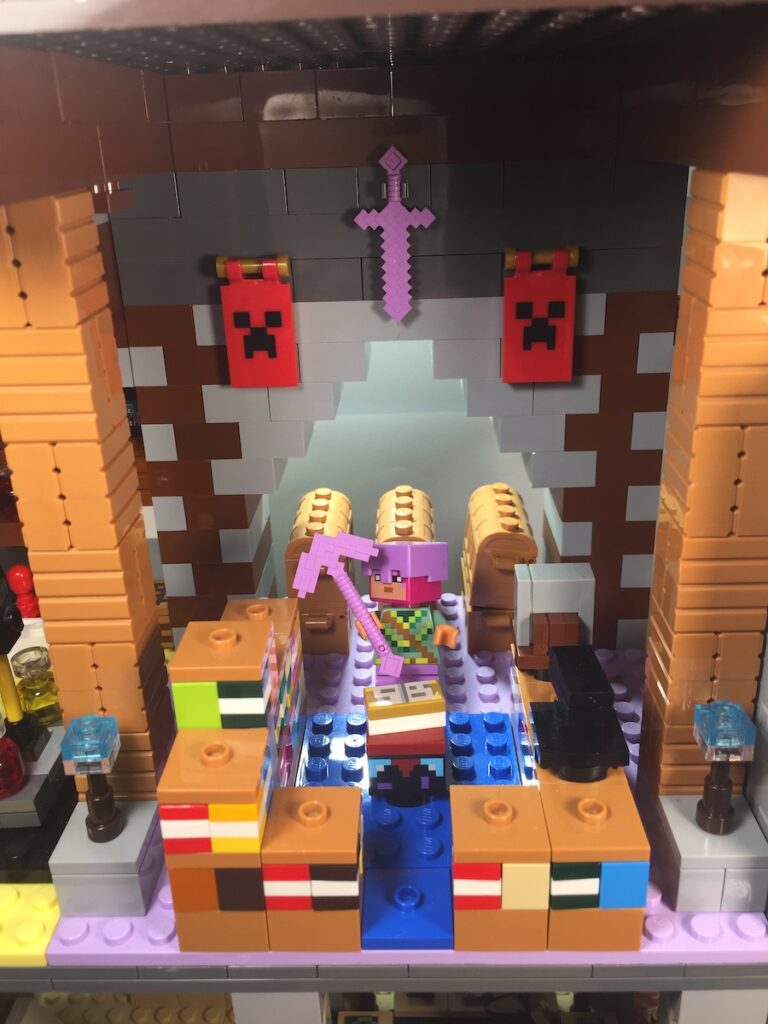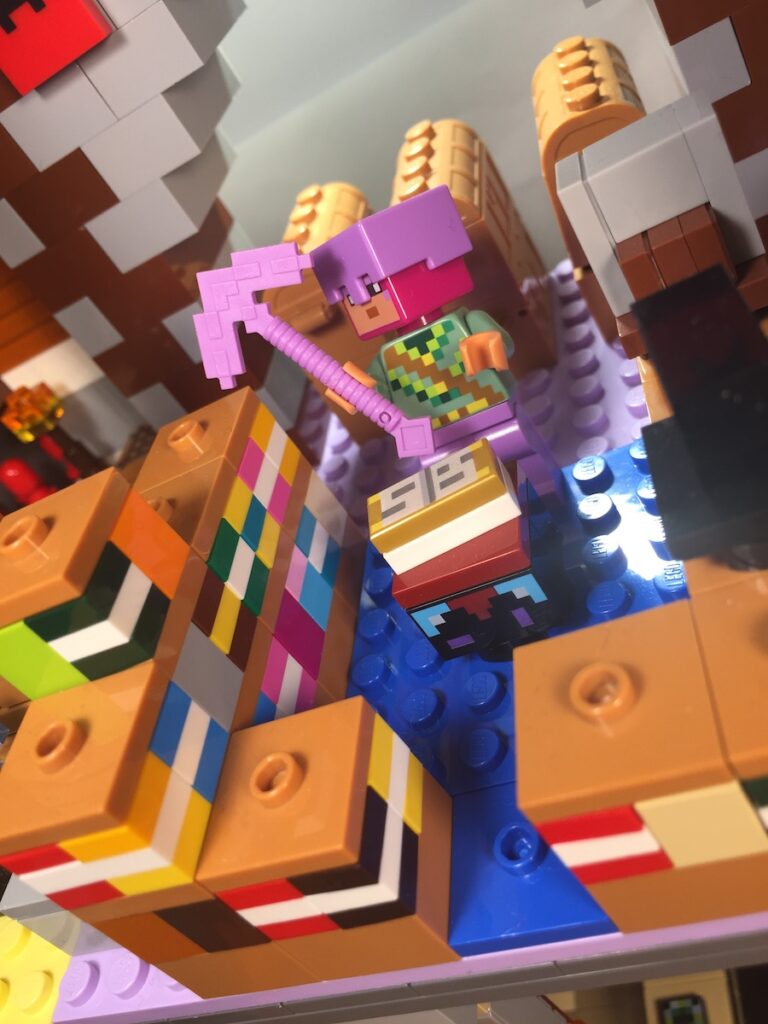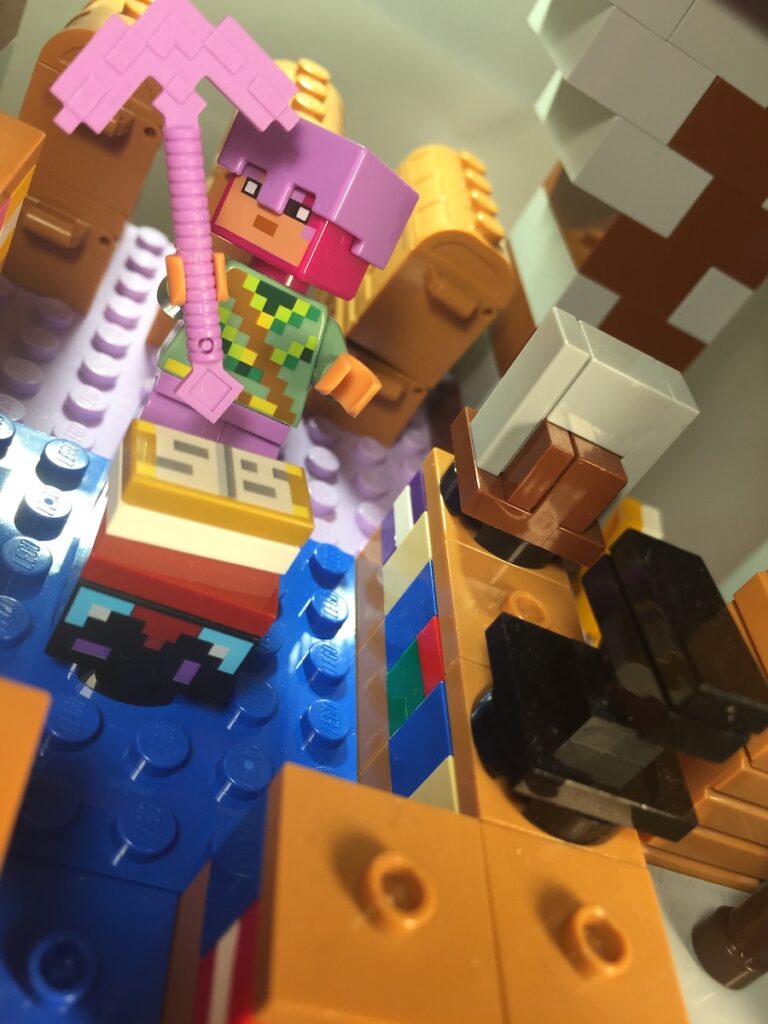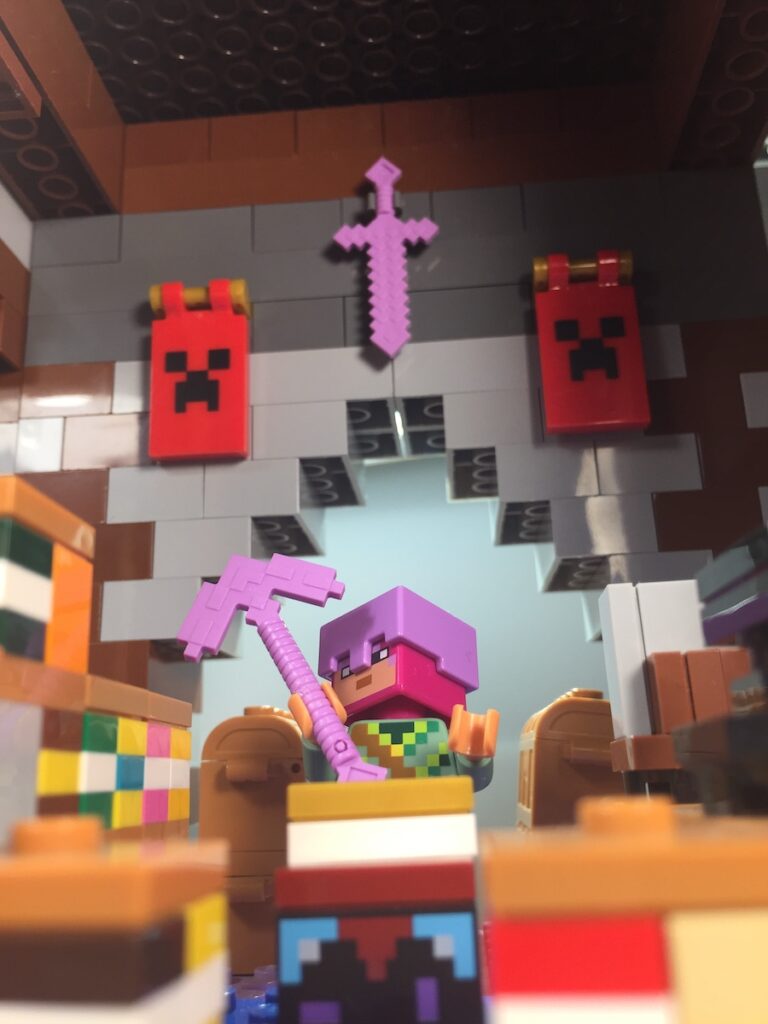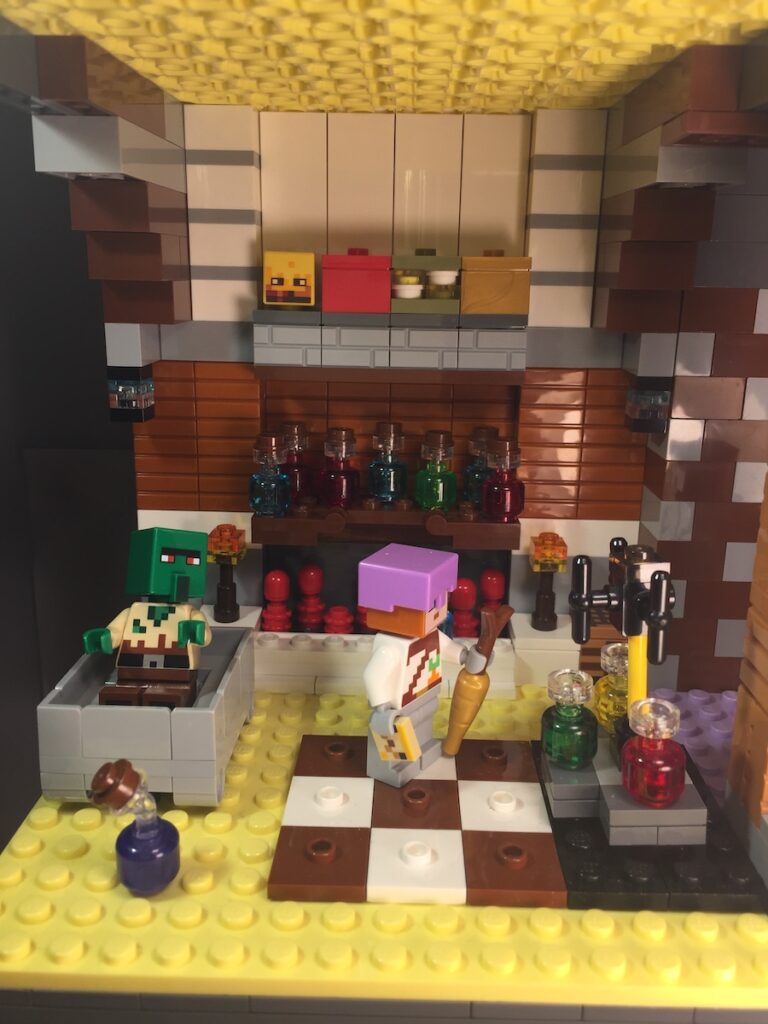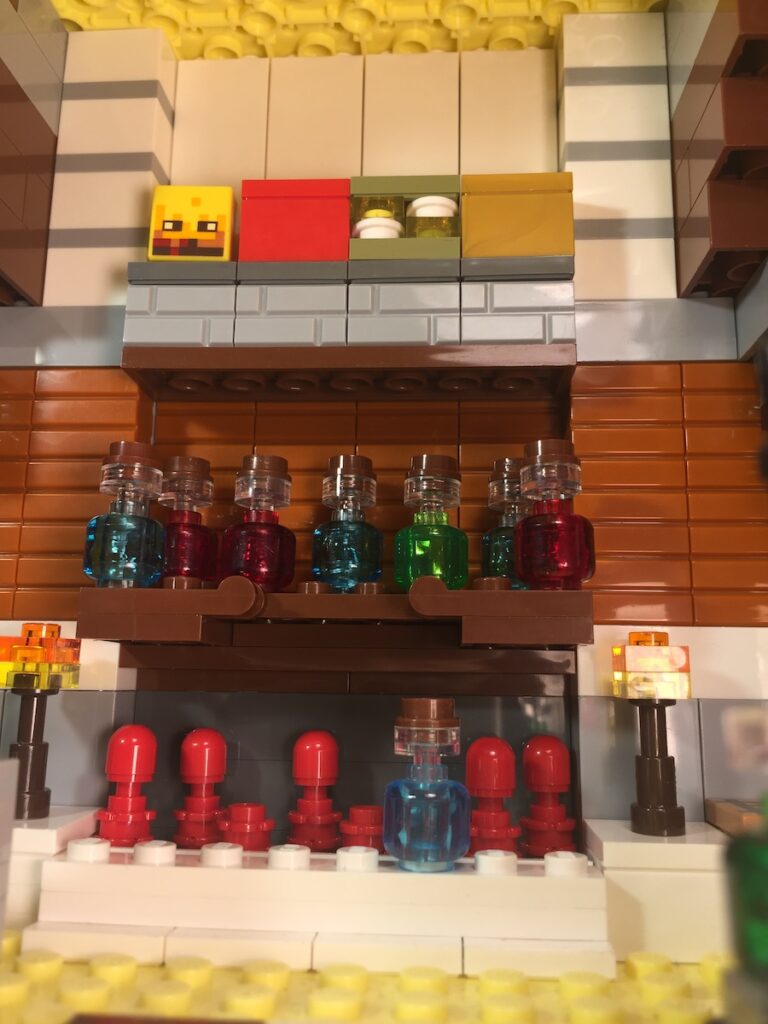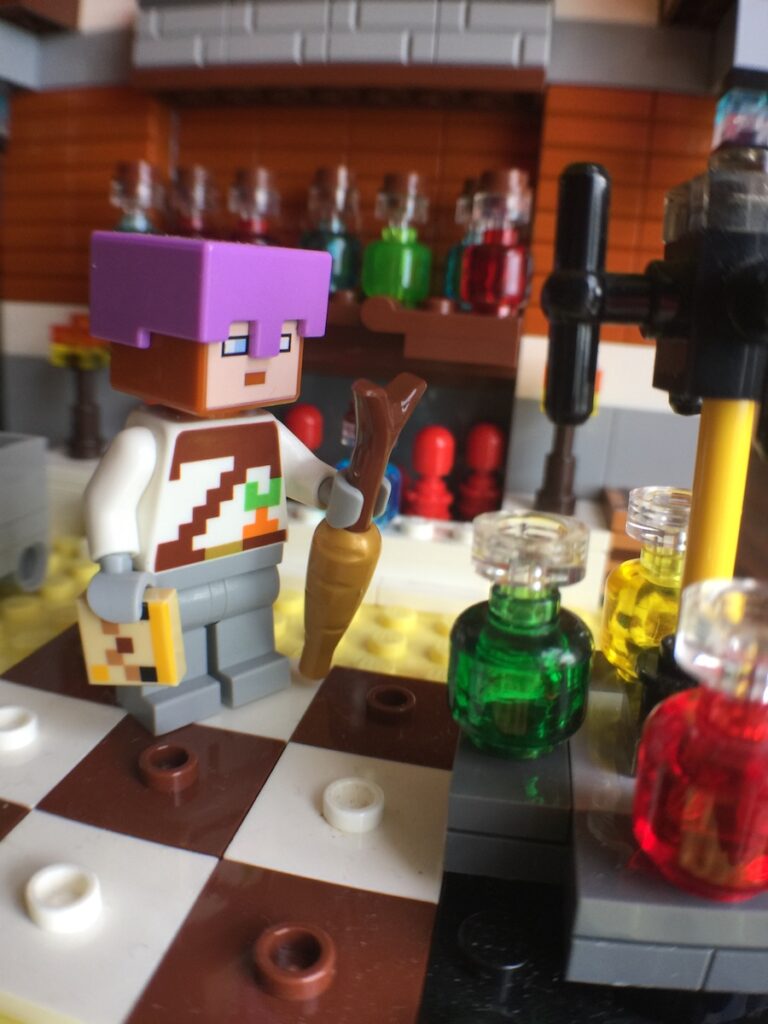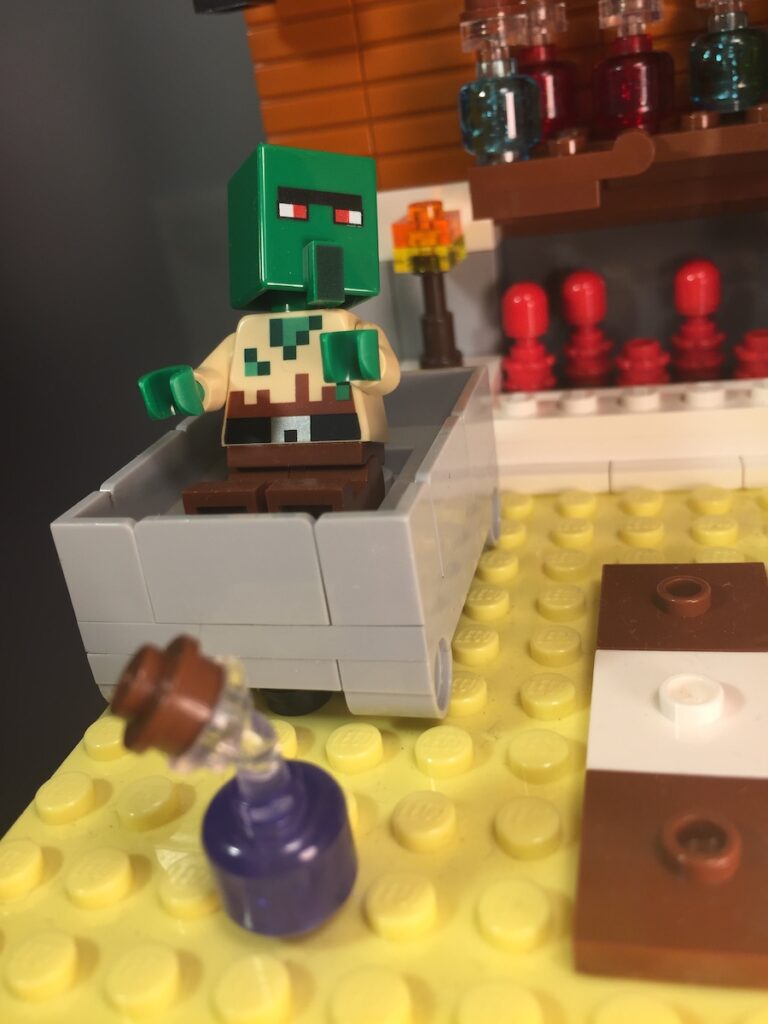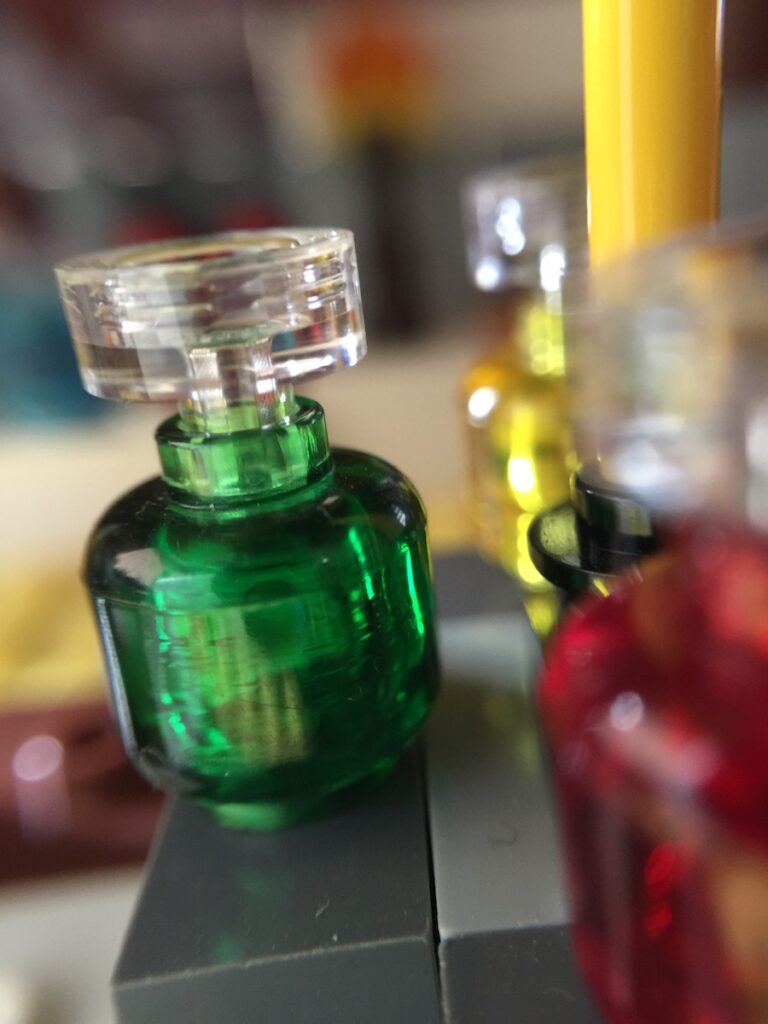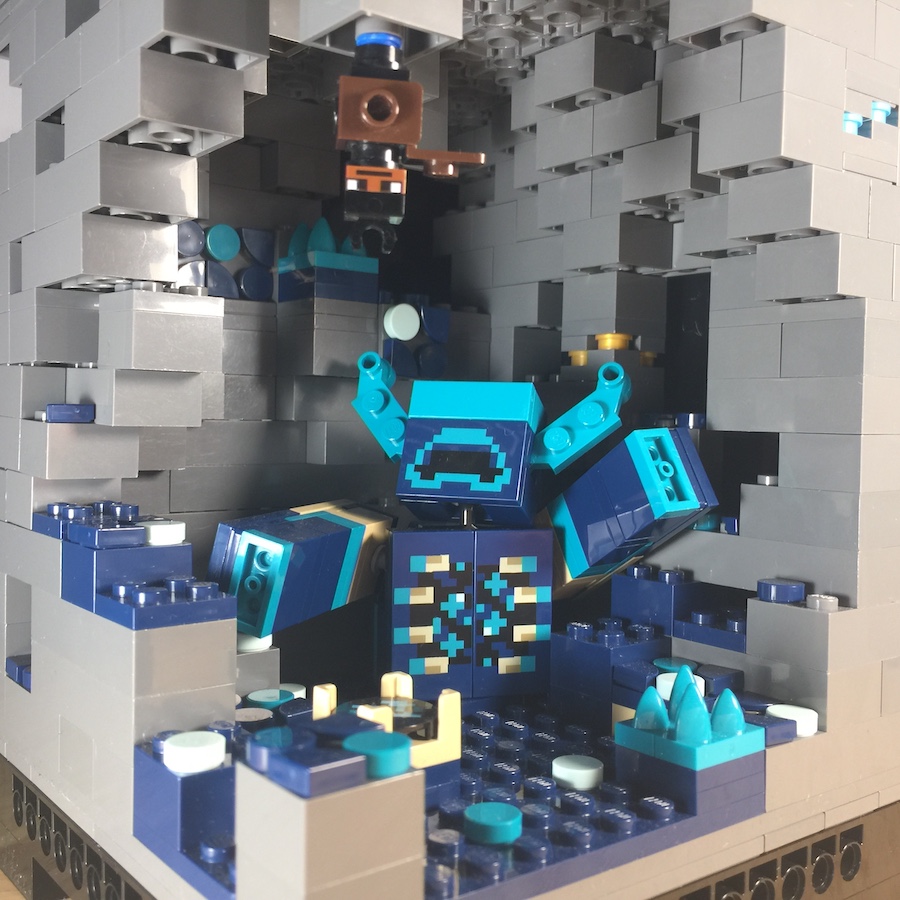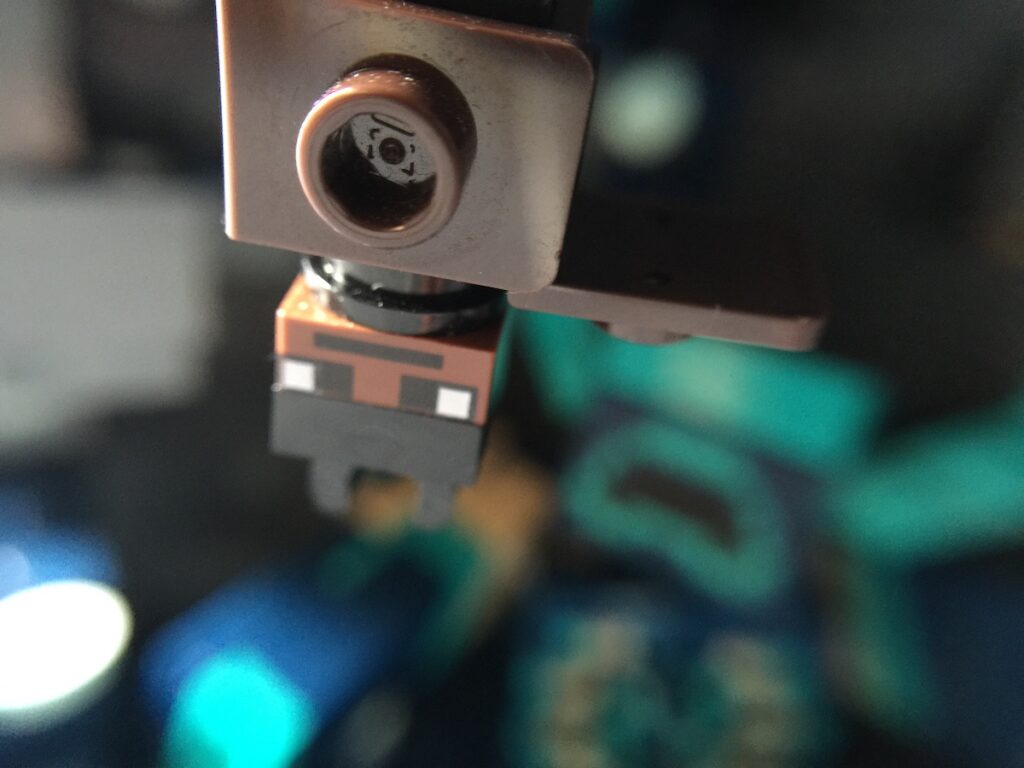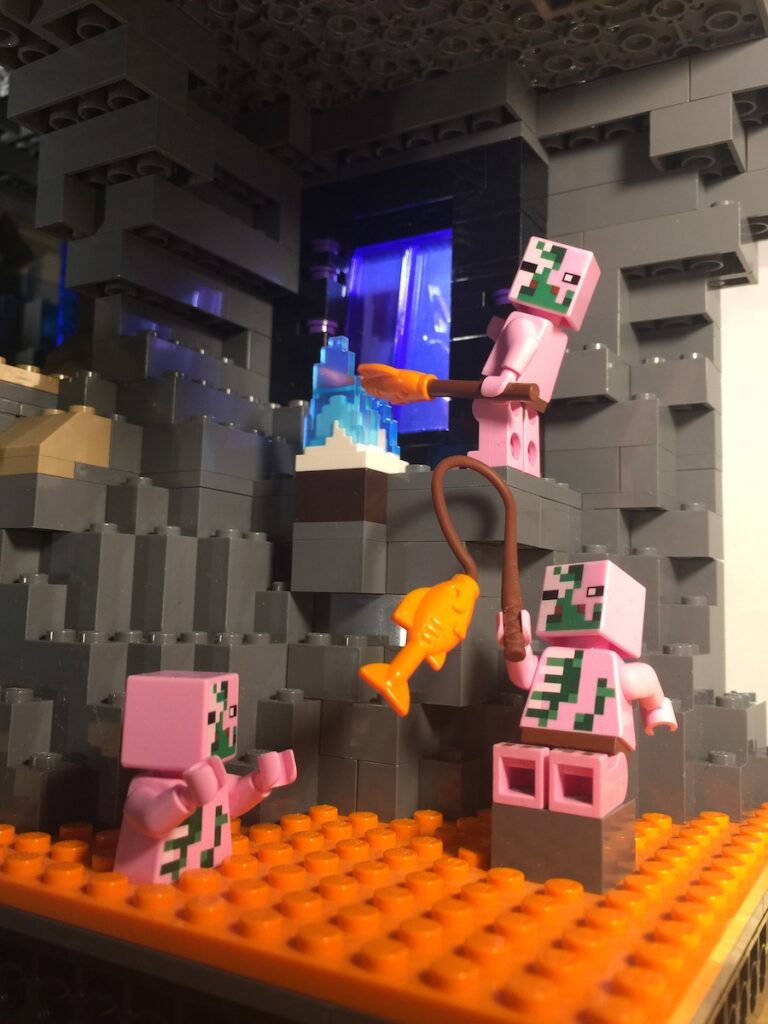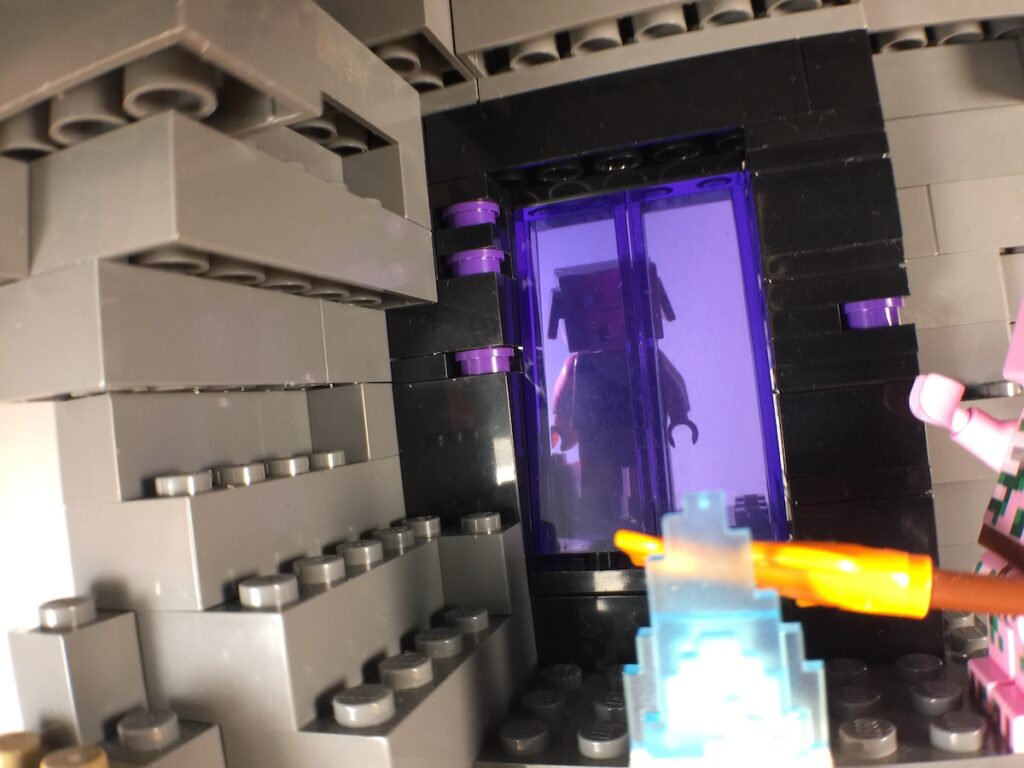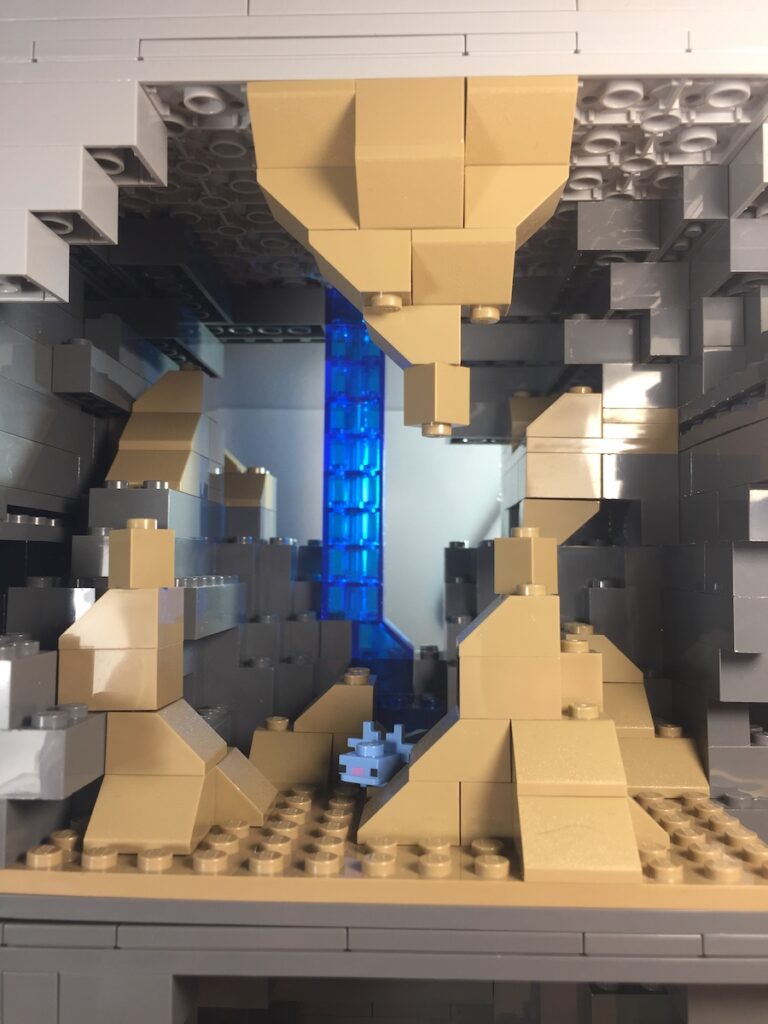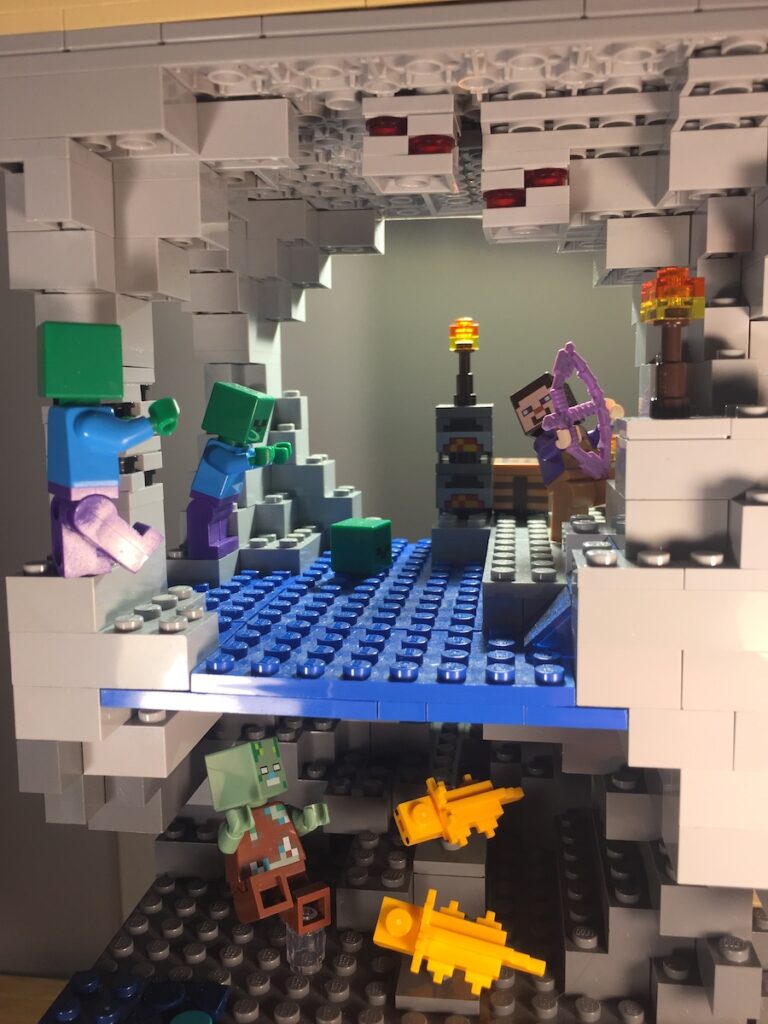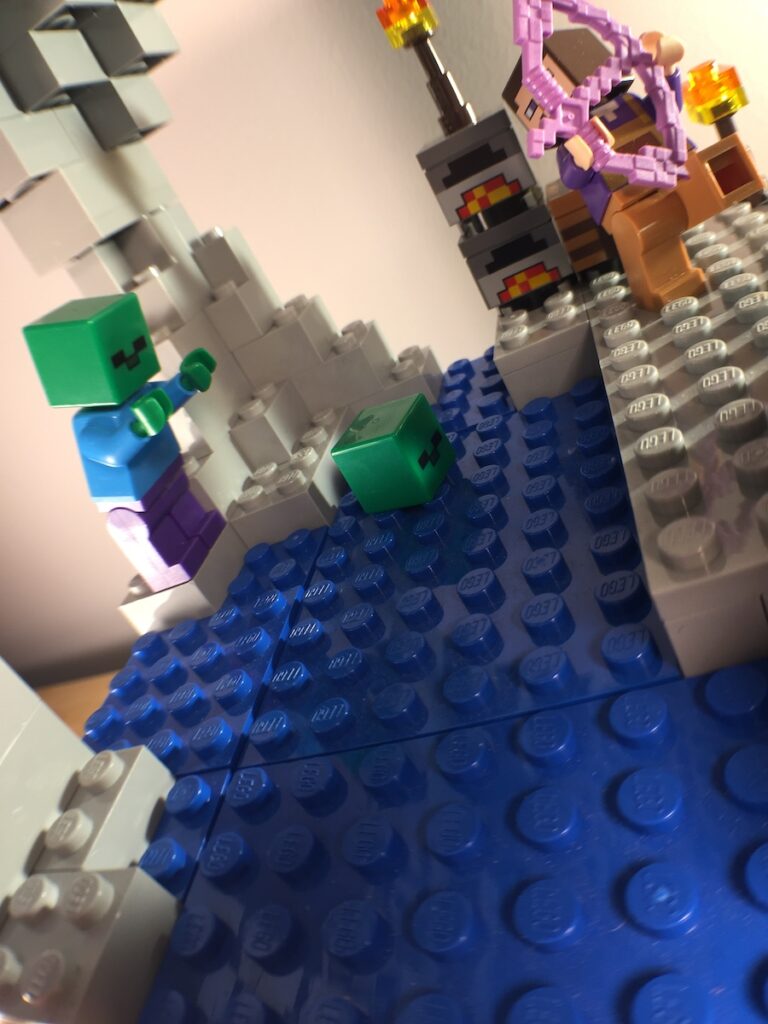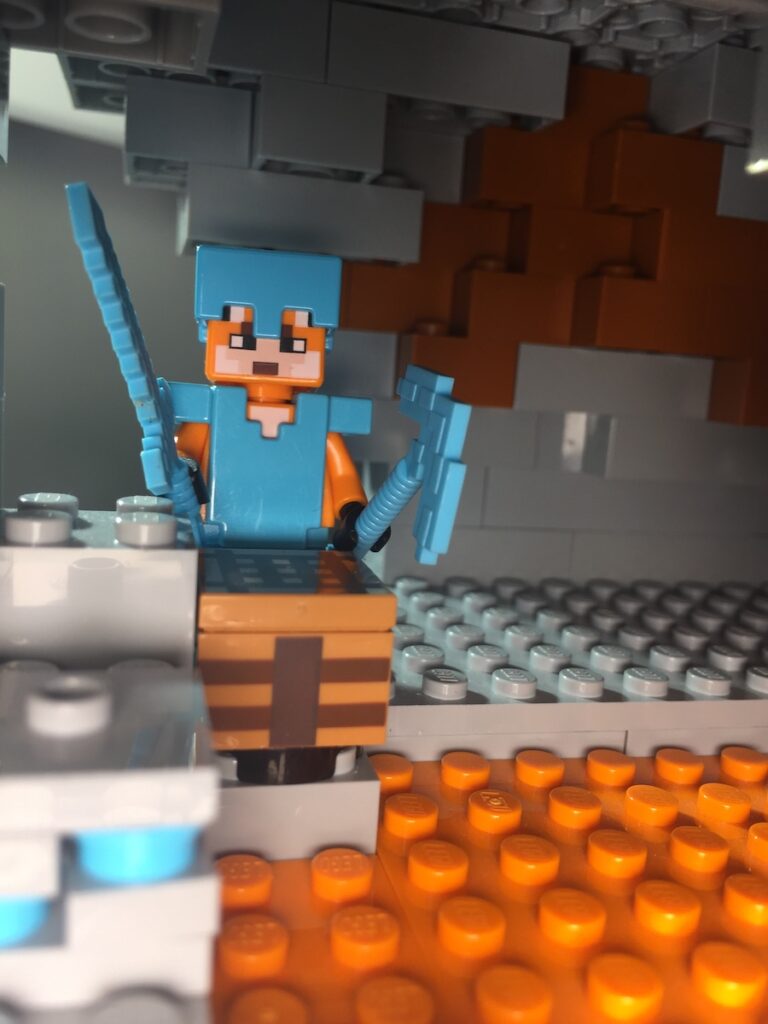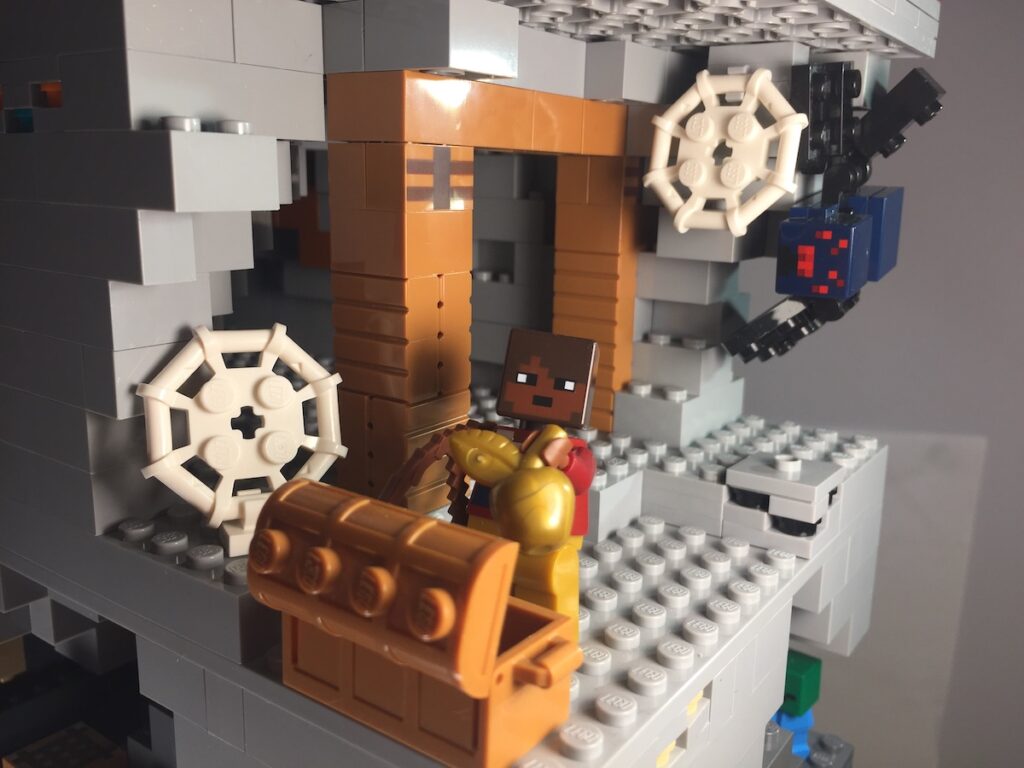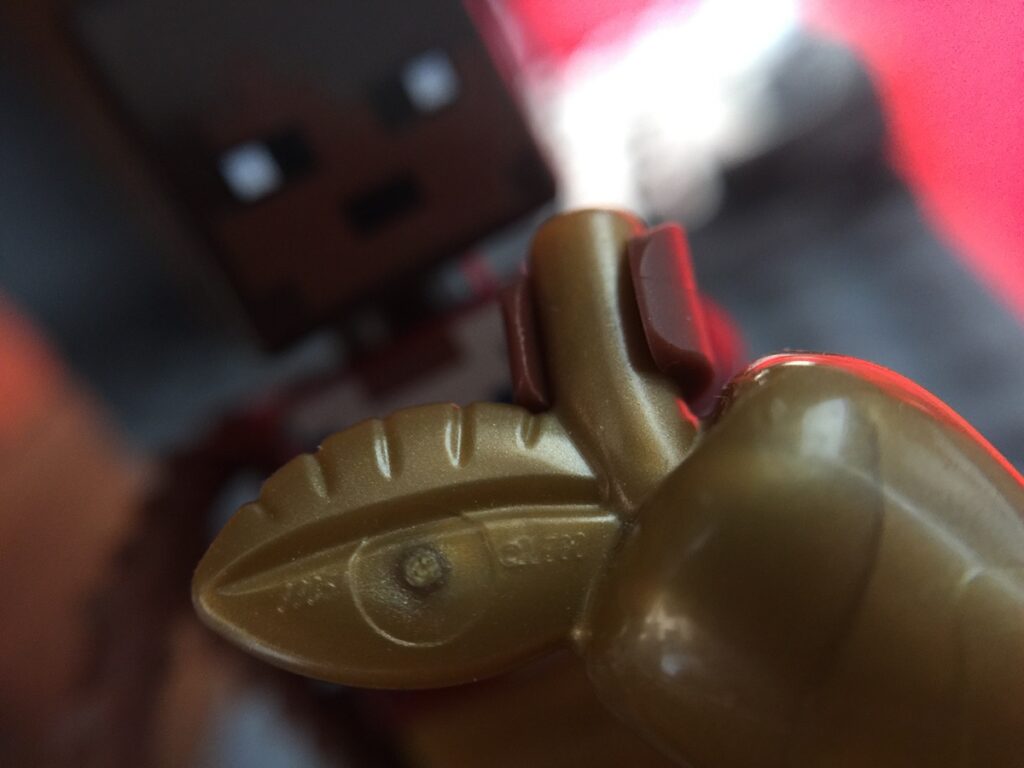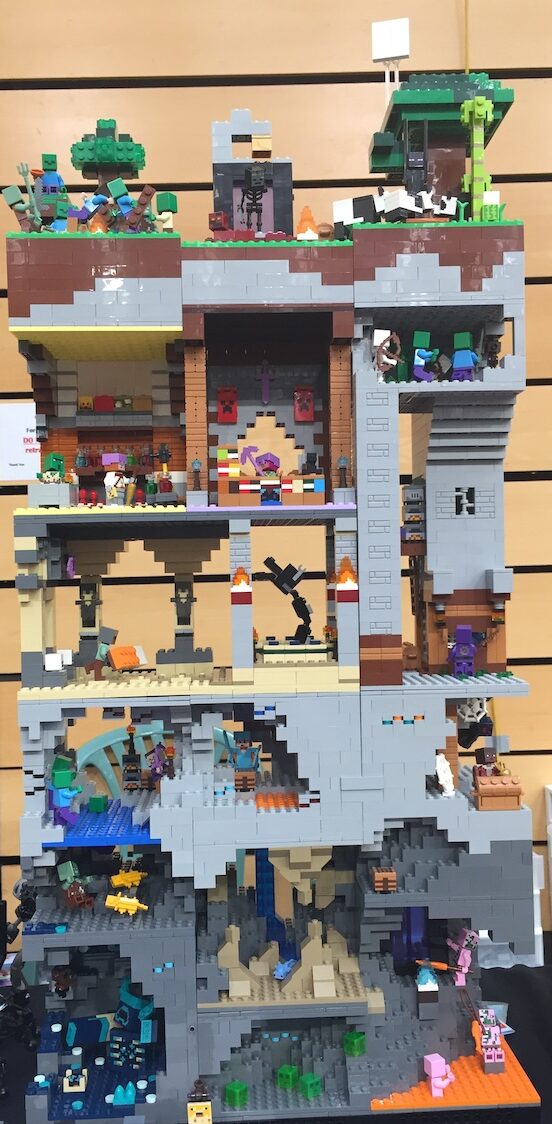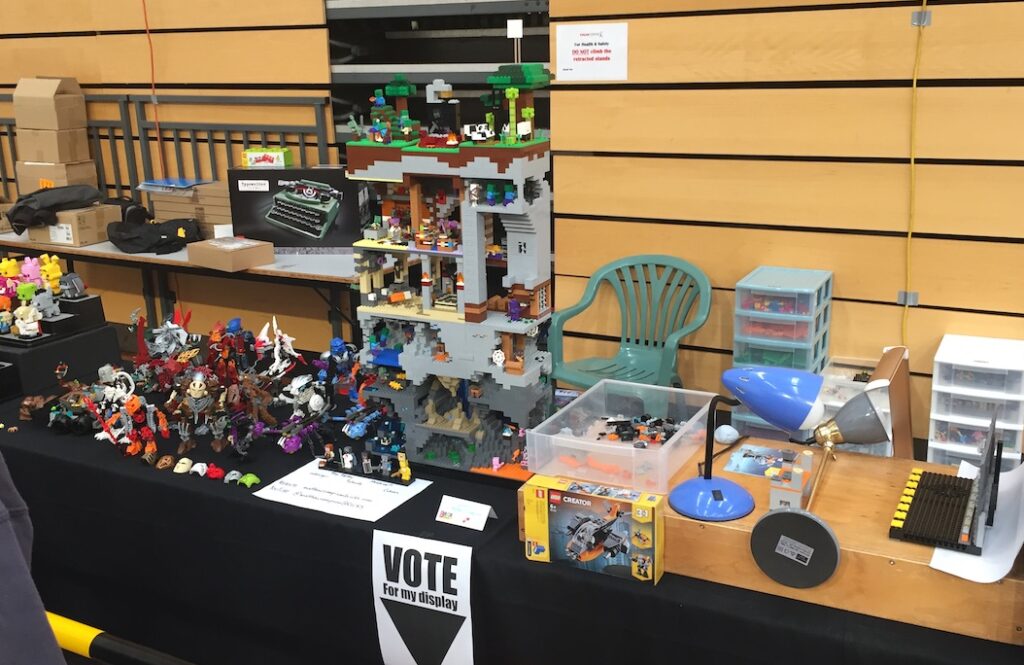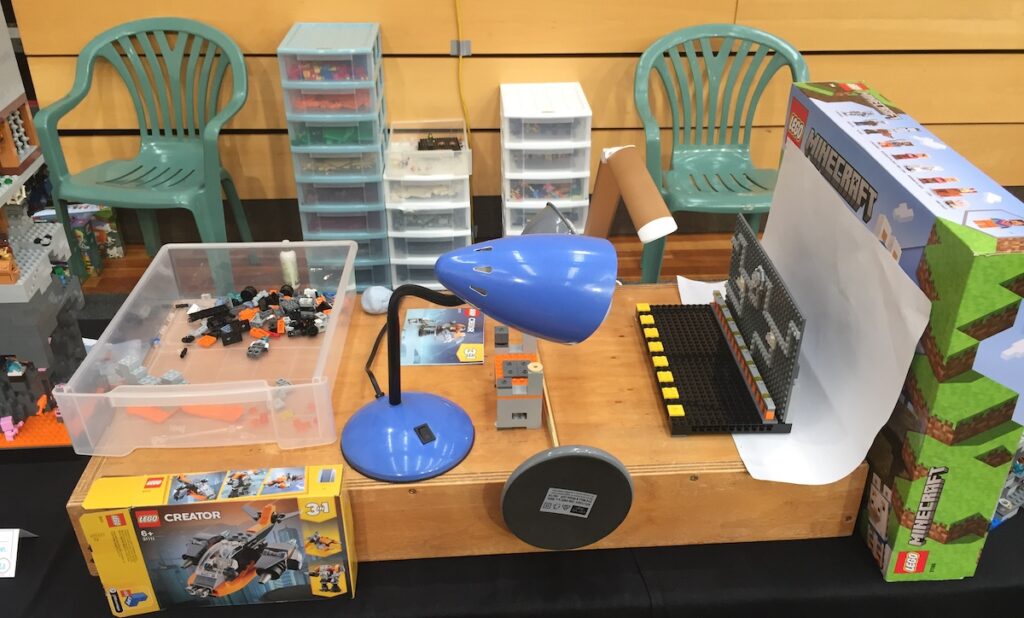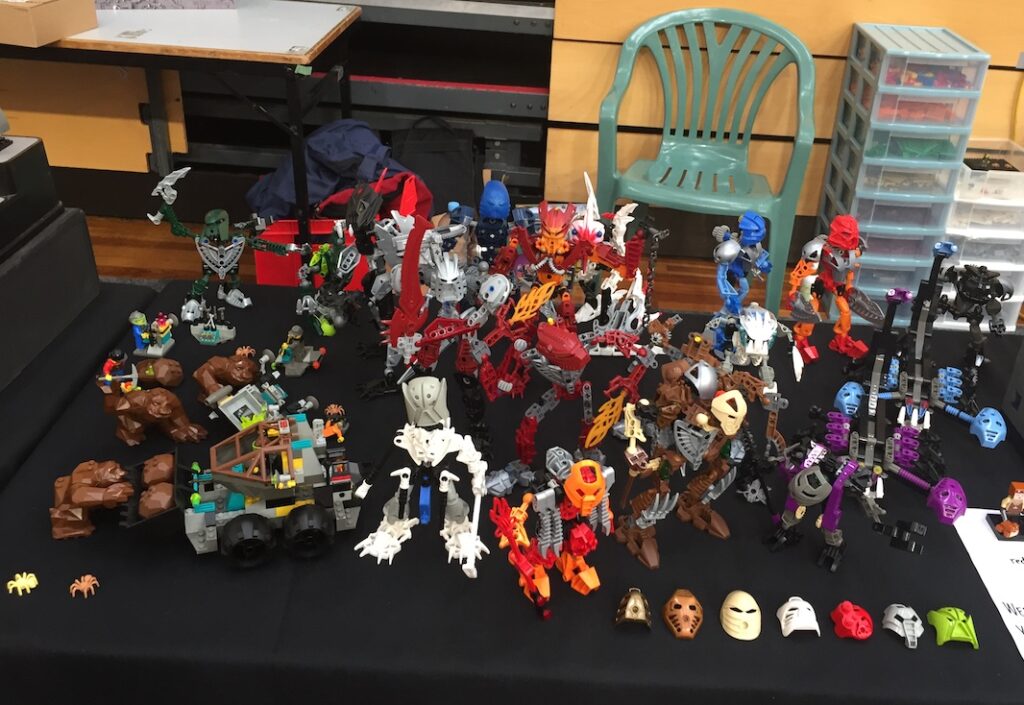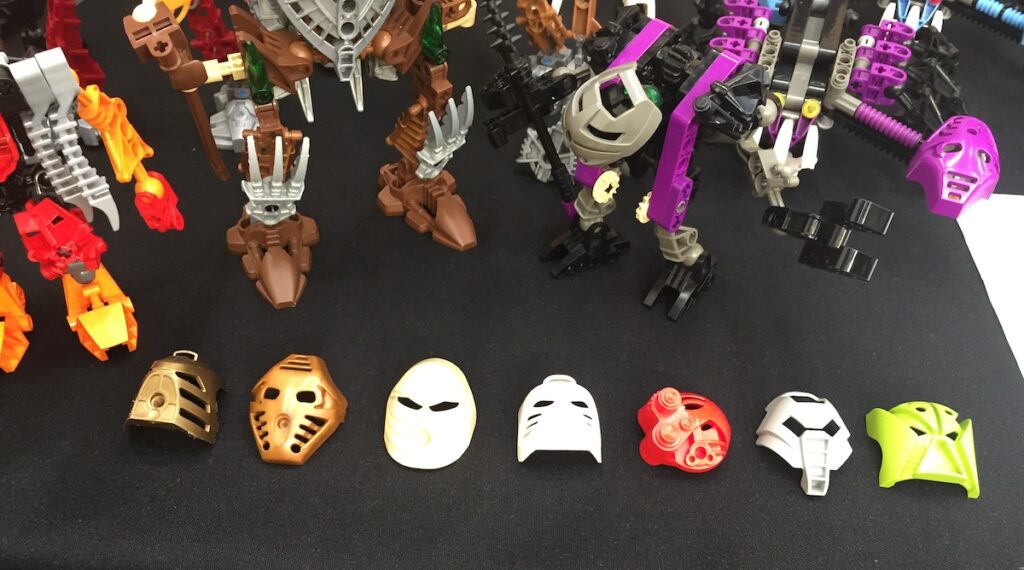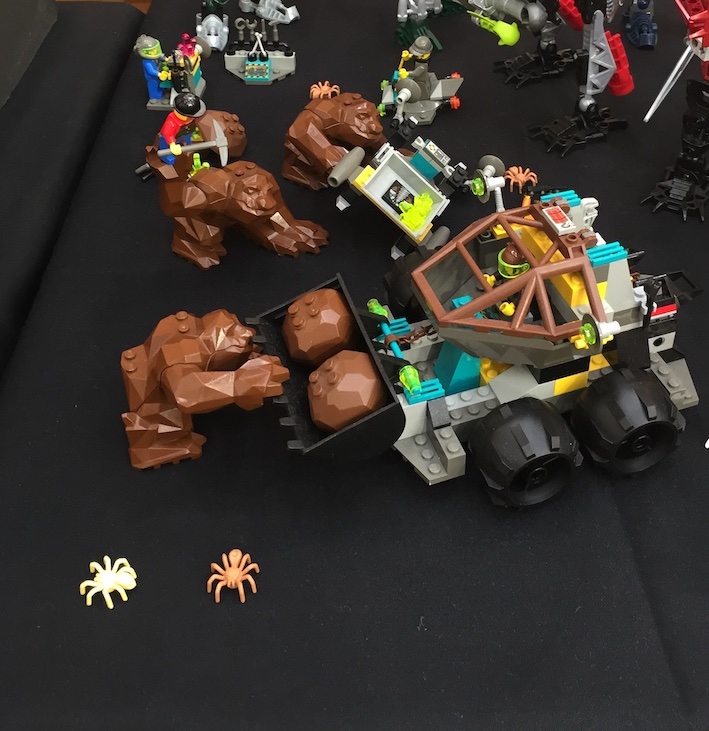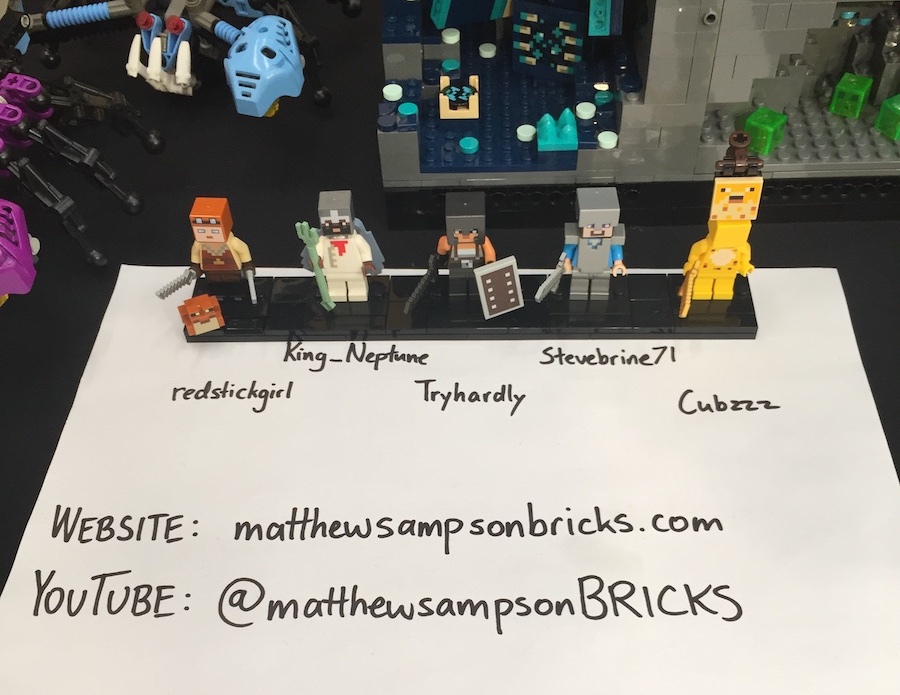We have finally reached the surface of the world with this last post about the Caaaaaaves! display. If you missed the other three, you can find them at these links:
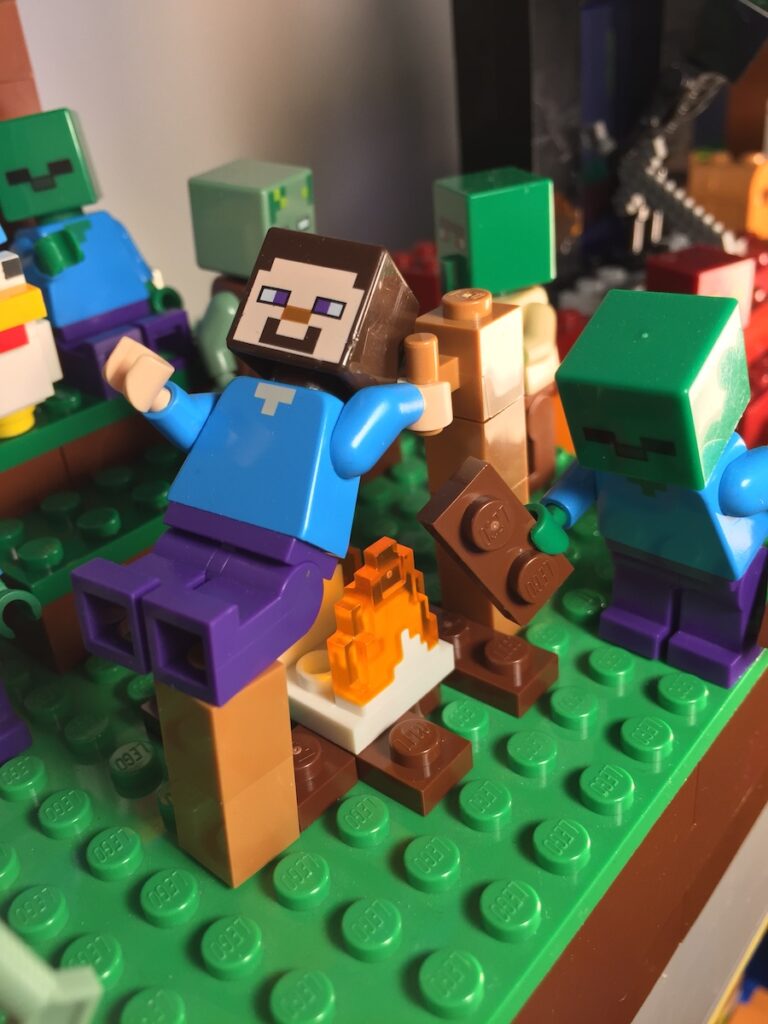
The Zombie Barbecue is one I would frequently point out to passing children. These zombies have culture enough to cook their food before they eat it!

The drowned on the left has a knife and a fork, ready to dig in!
The zombie on the lower right has a bucket of water for fire safety. Gotta be responsible with those campfires!
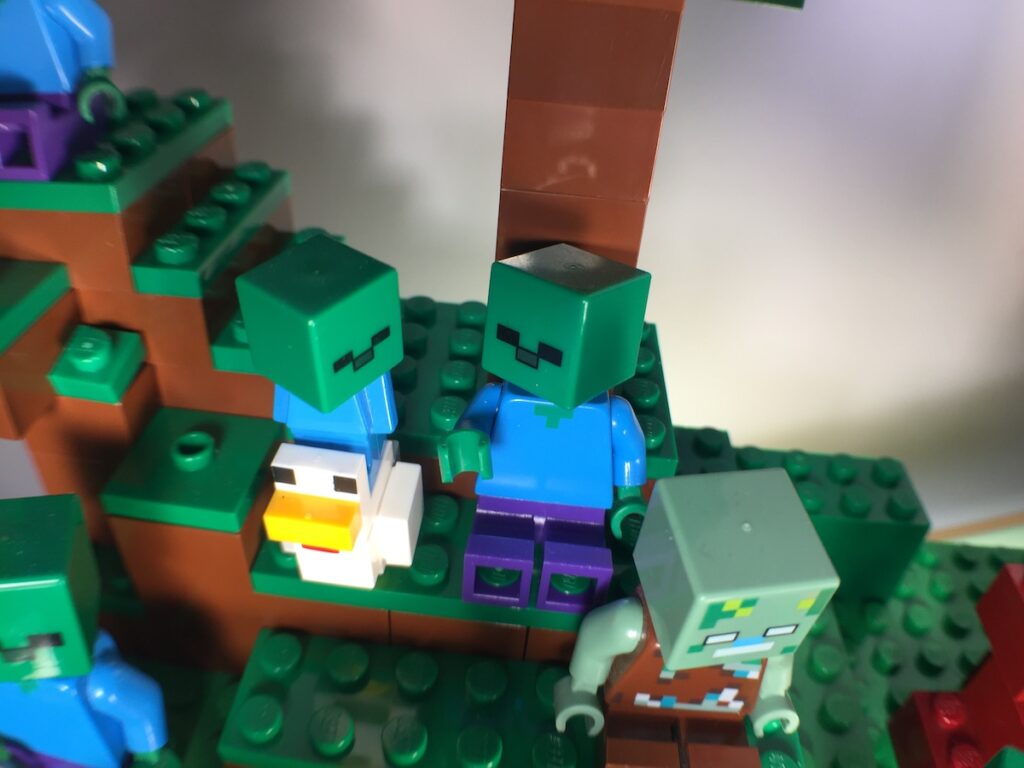
Some daddy-daughter time while the barbecue cooks. Awwwww!
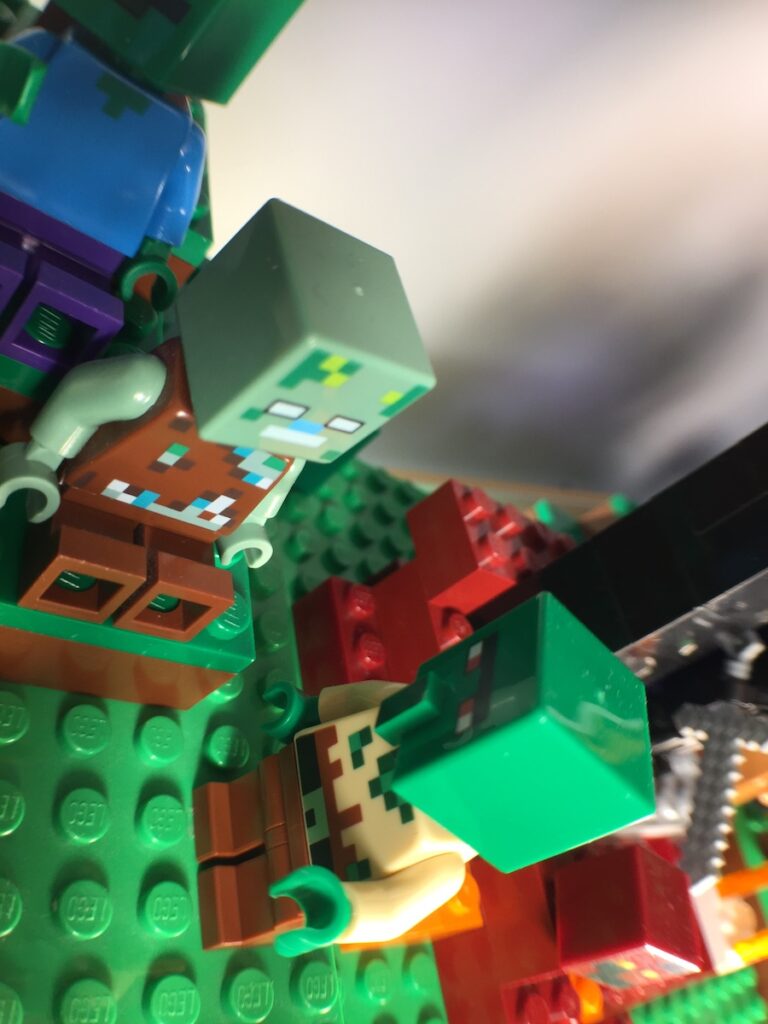
All variants of zombie are welcome.
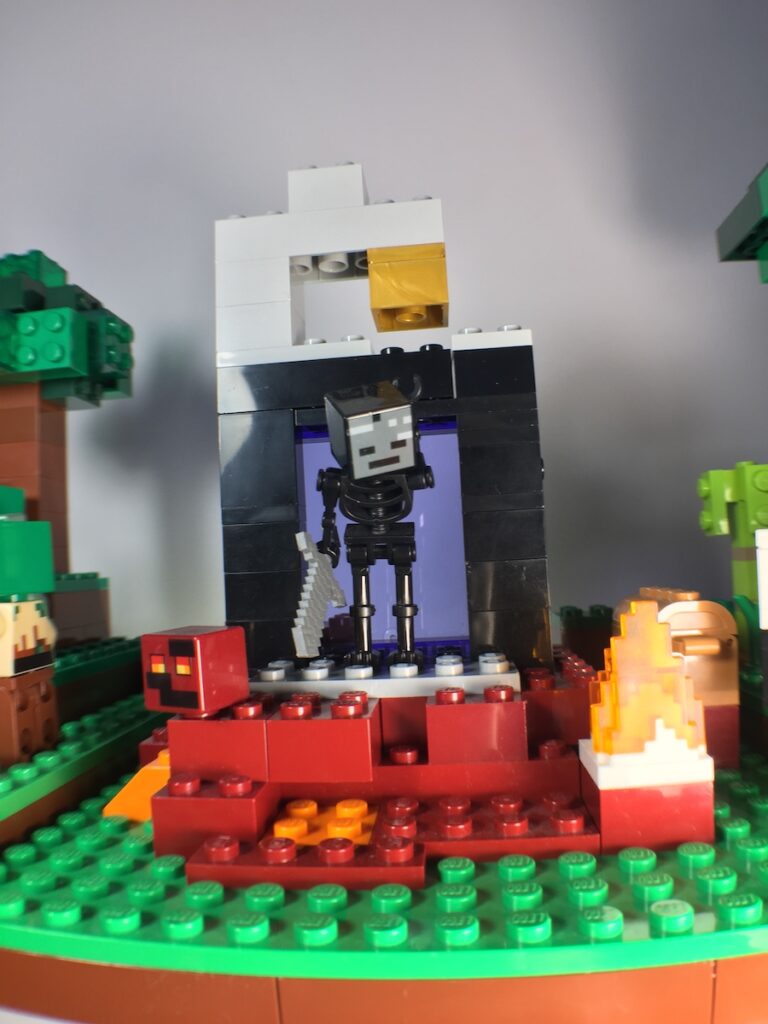
The Portal Inspector is also the inspiration and the movie set for Ouch!, a brickfilm I made in collaboration with another presenter at the Dunedin Brick Show. You can watch it here on YouTube.
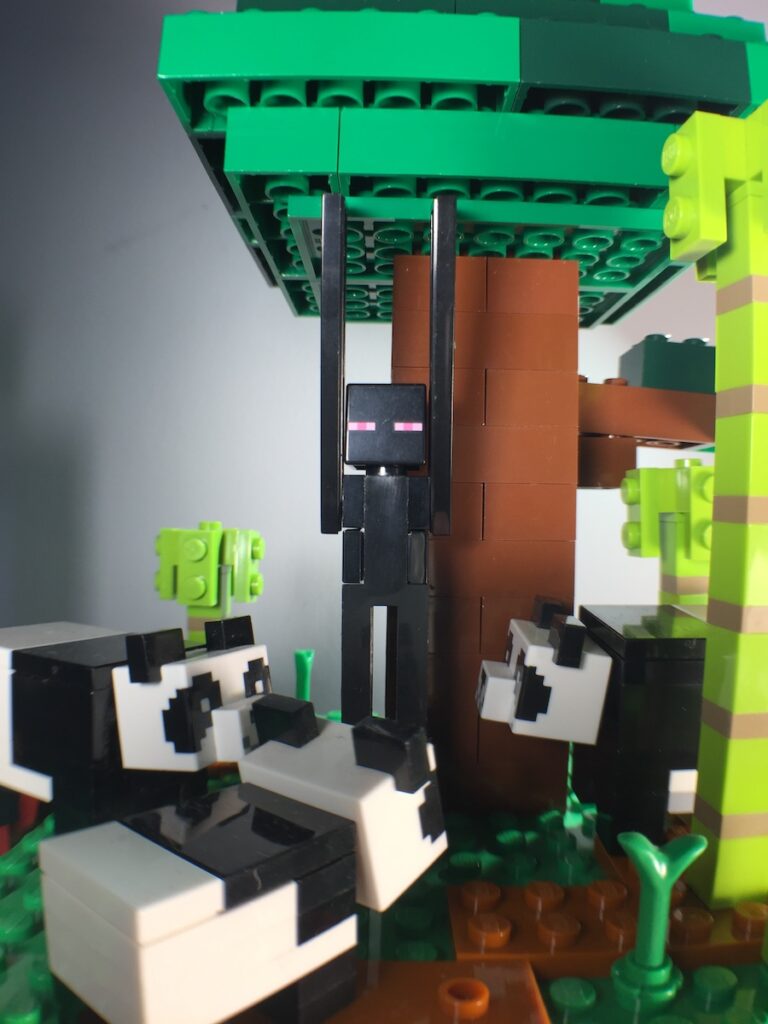
And finally…The Panda Surprise is the last build of the Caaaaaaves! display. I don’t know if the pandas actually intend any violence, but the Enderman clearly believes they do!
I used some reddish-brown bricks to represent podzol, which is often found in bamboo jungle biomes. BrickLink calls the colour “dark orange” (I had to look it up).
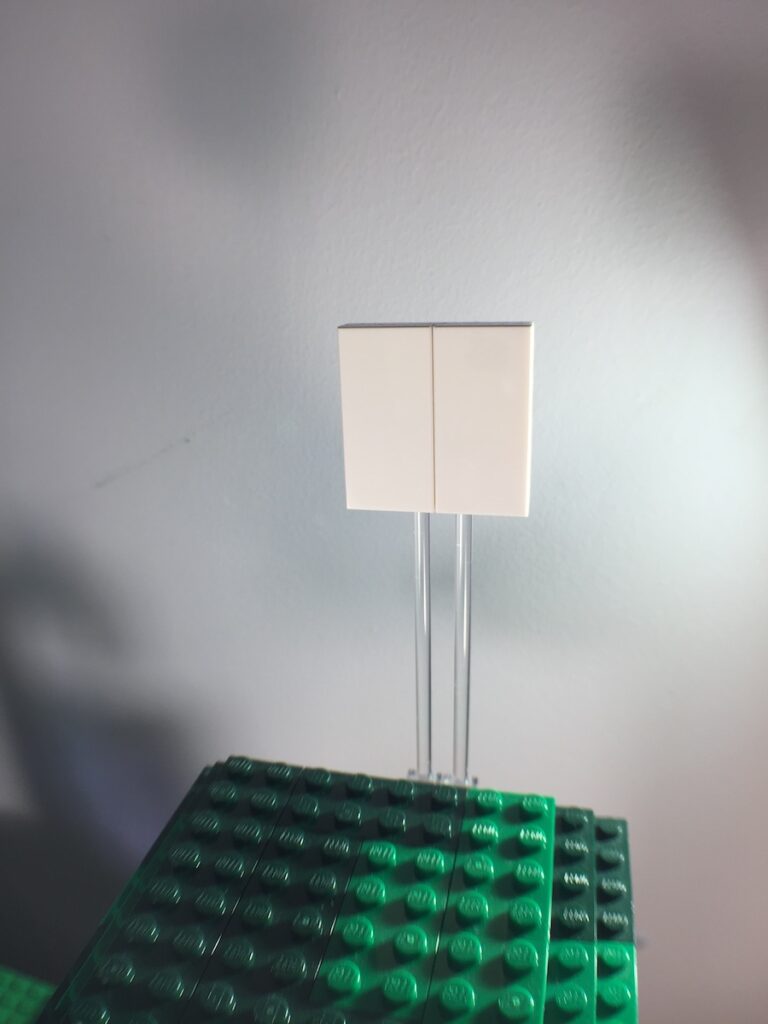
A square Minecraft moon is attached to the top of the tree.
And that is the entire Caaaaaaves! display! Thank you for following along as I point out the details of my monster build. Let me know if any of the caves or modules stood out to you.
Matthew
